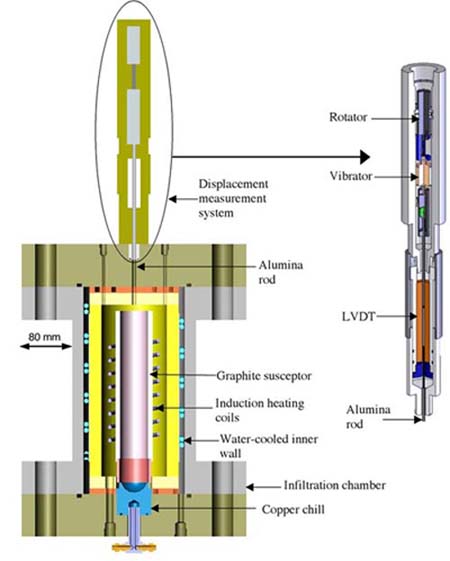G. Schneider, L. Weber, and A. Mortensen, with earlier contributions from A. Léger, N. Rojo Calderon, M. Kida, M. Bharaini, C. Bacciarini, R. Charvet and W. Dufour.
In this project funded by the Swiss National Science Foundation we explore the physics of capillarity in pressure infiltration by conducting high-precision experiments under conditions of low capillary number.
The wetting of solids by molten metals is usually studied using the sessile drop technique. This work presents an alternative method for the understanding of the wetting of solid by metals during pressure infiltration. We use an infiltration apparatus designed at EPFL and capable of measuring the rate of metal penetration dynamically during infiltration of porous preforms at high temperature (≈ 1000°C) and high pressures (≈100 atmospheres). We study the metal flow path during infiltration, exploring the early phases of the process, and explore several issues known from sessile drop experiments to govern the wetting of oxides and other ceramics by molten metals. These include the role of oxygen, the role of adsorbing alloying elements and the role of interfacial reactivity remain, all of which remain incompletely understood in dynamic wetting conditions characteristic of infiltration processing.
